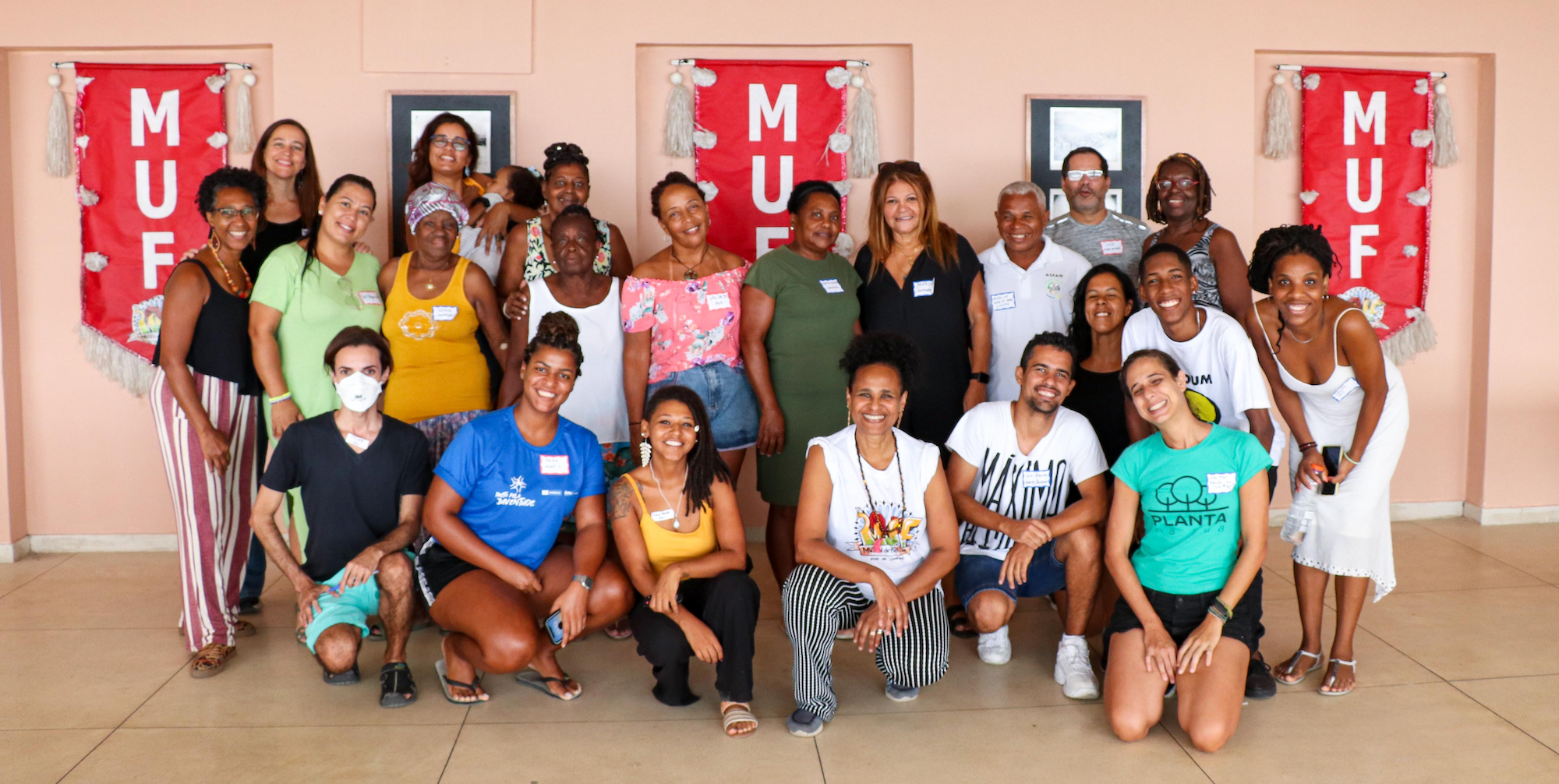
On June 17, 2023, Rio de Janeiro’s Sustainable Favela Network (SFN)* launched its Favela Climate Memory Exhibition, the culmination of five day-long climate memory circles held by favela community museums between January and March. This series of articles explores the dynamics of each memory circle which makes up the exhibition, with this article introducing the fourth discussion circle, held on March 11 by the Favela Museum (MUF). Developed by the SFN’s Culture and Memory Working Group, the project was realized by community museums, technical allies, and community organizers from favelas across Greater Rio.
The Sustainable Favela Network’s Climate Memory Circles are community events aimed at recovering and recording the memories and stories of long-time residents of Rio de Janeiro’s favelas in relation to the environment so as to envision ways to prepare for climate changes to come. Though still rarely discussed, the memory circles showed that climate change is very much present in the daily lives and concerns of favela residents.
Each memory circle event took place over the course of a day, with residents invited by the museums to take part in a series of discussions designed to focus on and dig deeper into the climate change theme. Residents shared their views and experiences of climate change, recovered memories about the settling of their communities and the relationship of this settlement period with the surrounding environment, discussed the relationship between climate impacts and housing rights, and explored solutions and organizing by residents, highlighting the mistaken priorities of the State, which tends to see forced evictions as the solution.
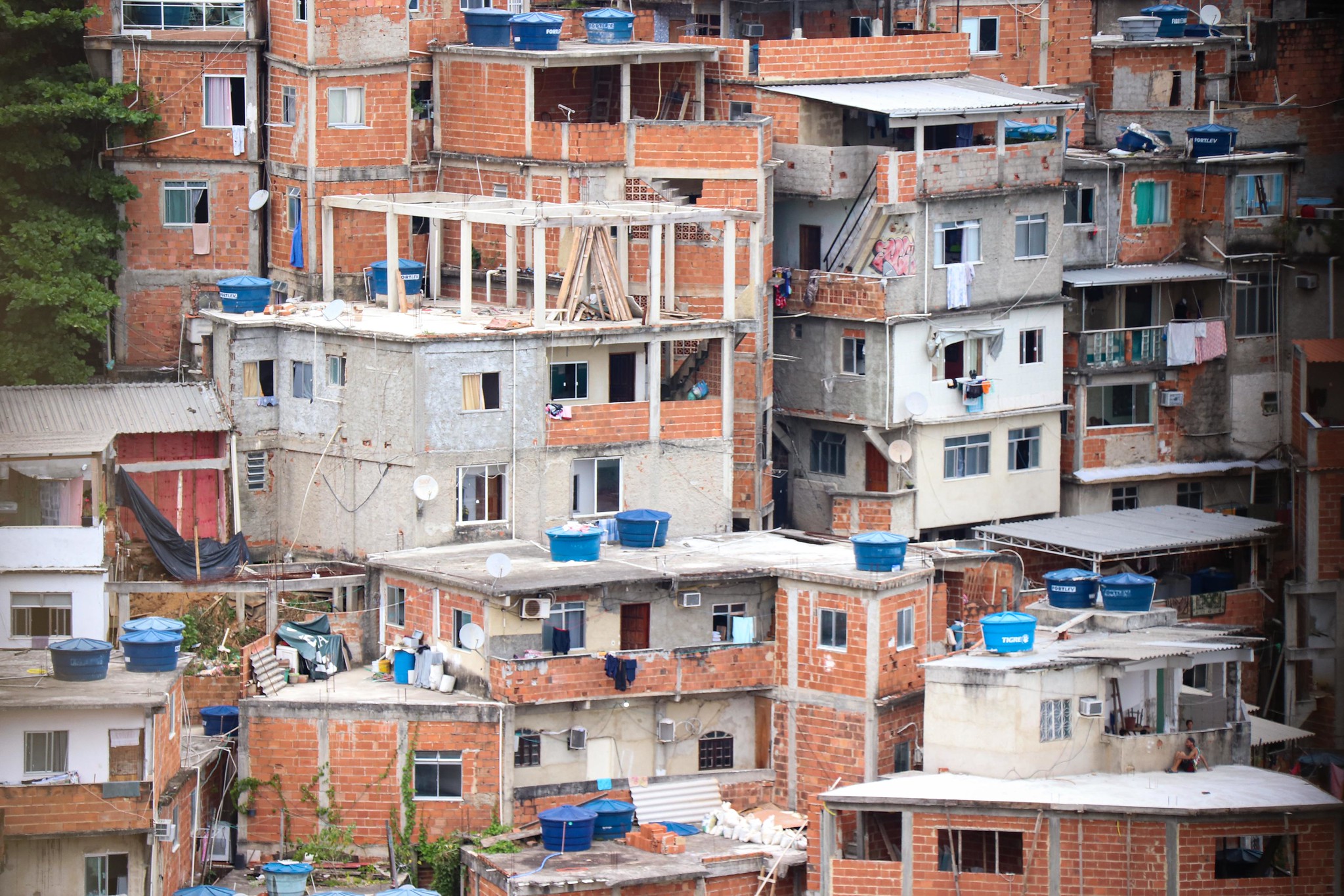
On March 11, 2023, 30 residents and community organizers from Pavão-Pavãozinho and Cantagalo (PPG), favelas in Rio de Janeiro’s South Zone, got together for the fourth Climate Memory Circle. As well as residents, participants included members of host organization Favela Museum (MUF) and other local organizations such as Favela + Limpa (Cleaner Favela), Planta na Rua (Plant the Streets), PPG Informativo (Inform PPG), Solar Meninos de Luz, and youth from the community involved in the Youth Pact, as well as museum collaborators taking part in the Favela Climate Memory project from other communities.
Throughout the day, the Favela Museum coordinated discussions around the themes of memory, how the area was occupied, community relationships with the location, water, solid waste, housing rights, forced evictions, and local knowledge and solutions. The event enabled exchanges between residents through four discussion circles which explored the key questions which have been guiding the events.
Psychodramatist Rosana Corrêa kicked off the day’s activities by inviting everyone to stand, move, mingle, and try a playful psychodrama activity which used drama and body movements to prompt reflections about how to deal with personal, interpersonal, and collective issues.
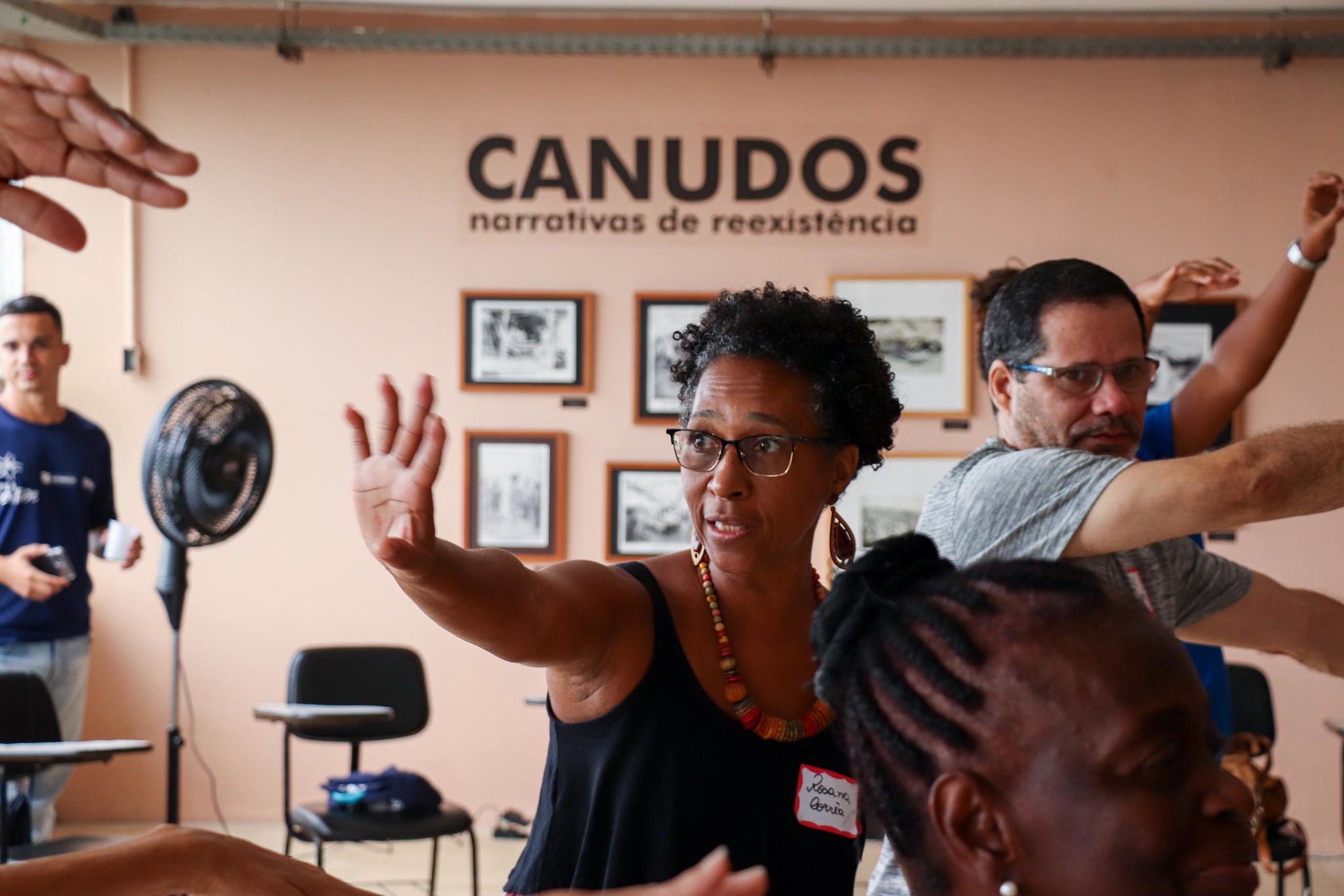
The Pavão, Pavãozinho and Cantagalo favelas (known collectively by the acronym PPG) are located between the iconic Ipanema and Copacabana neighborhoods. Ever since the communities were first settled, they have been commonly considered a nuisance by neighbors in the formal city and government. Contrary to this view, PPG is the resistance of people who did not have choices or guaranteed rights. And its history has been preserved through the work of the Favela Museum created in 2008. Opening the day’s discussions, Favela Museum coordinator Márcia Souza outlined its purpose.
“We discovered social museology, which states that a museum is not just what’s inside it, the old things. It’s also what surrounds it. That which can be accessed by any person: formal city, favela, quilombola, rich, poor, young—all people. Then, we did what no one knew we could do. We turned the whole favela, all of PPG, into a museum. So all of you live in a museum… On the canvas-homes circuit, those painted houses, we narrate who created them, who came, where they came from. We talk about how we live, how we interact, where we came from. The favela grew and we grew along with it. So, this is what we do; we tell our history, we recount our growth. And most importantly: we own this. We are part of this city, we are an asset to this city. It’s all ours.” — Márcia Souza
Gisele Moura, coordinator of the SFN management team, spoke after, reminding everyone that:
“Our proposal for today is to cultivate PPG’s climate memory. It is very important that you are all here. Thank you for accepting the invitation to tell your stories… to hear everything touching on memory, nature, and climate that you have experienced here. This is a very special time for you to speak, it is all yours. We always have stories told by other people: this is an opportunity for you to tell your own stories, your memories.” — Gisele Moura
If all residents have memory and a story to tell, then the archive created by the circle would be established by residents. The central questions relating to climate memory in PPG involve understanding how people in the favela live, where they come from, how they use natural resources to survive, and how the environment positively and negatively impacts their lives.
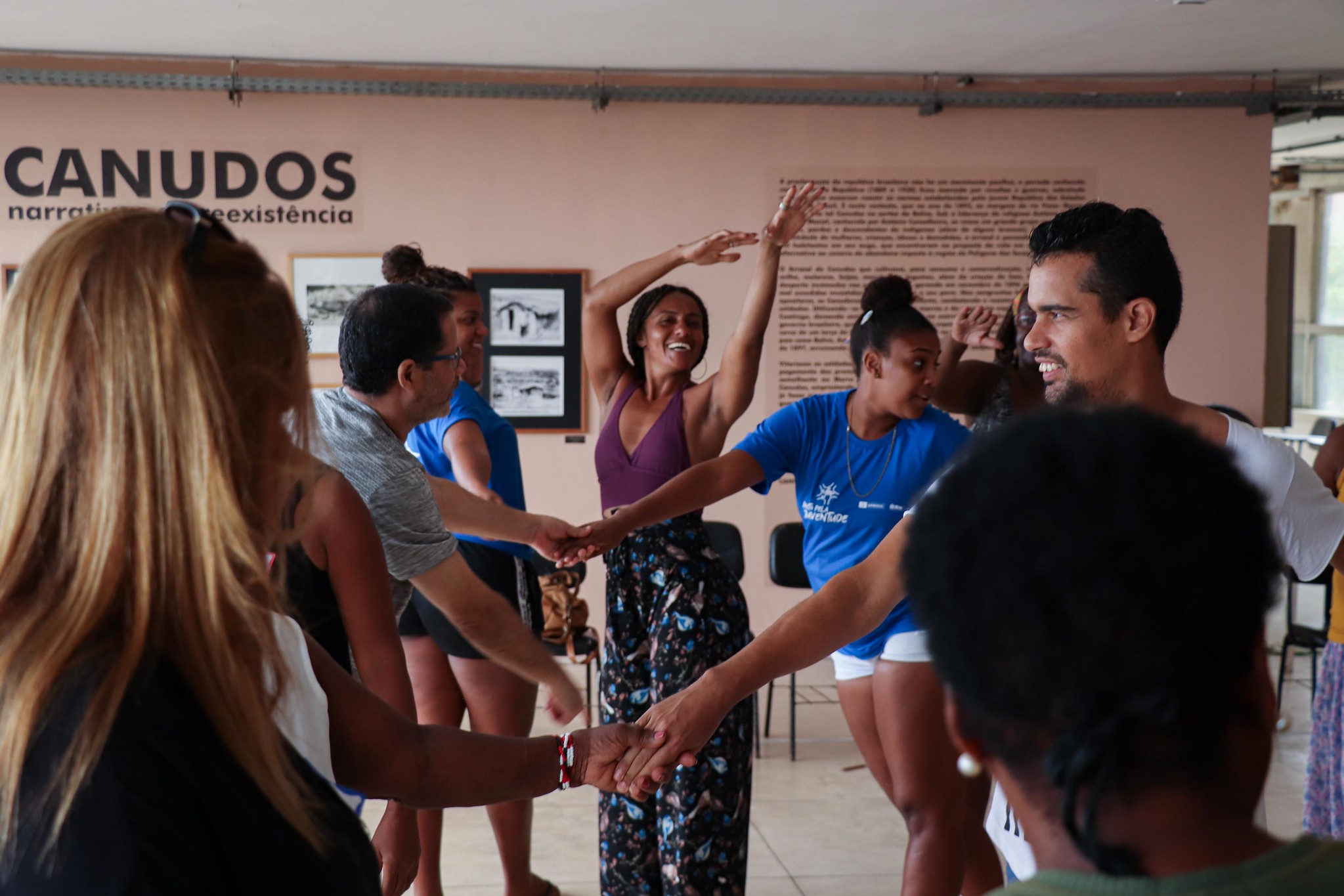
What Is Climate Change? How Did the Occupation of the Favela Happen and What is the Area’s Relationship With the Climate and Nature?
The start of the conversation was marked by a knowledge exchange relating to climate change and the favela’s history of occupation. According to residents, trash is one of the main factors causing local impacts such as landslides and floods after heavy rains—recurring issues affecting the city. Cantagalo resident Marcia Santos Pinto summarized the link between climate change and irregular waste collection and disposal in her community.
“I understand climate change to mean all the transformations in climate and temperature over the years, over time. But currently [the environment] is being harmed by our human activity and all our poor lifestyle choices. Such as waste disposal for example. I have seen some landslides here in my time. Poor conservation, waste distribution, that’s a very serious issue.” — Marcia Santos Pinto
She recalled a significant event experienced by older PPG residents: on Christmas Eve, 1983, a community water tank dislodged and fell down the hillside. According to Santos, ten to 15 people died in the tragedy. An article by newspaper Última Hora, however, reported 17 deaths.
Following this recollection, Márcia Souza clarified what happened, pointing at waste in the community as the true root of the problem.
“It wasn’t exactly that the water tank fell. It was the trash. People made a mountain of garbage up there [due to the lack of public collection] and it fell… They built another similar mountain in the same spot and it fell again. This mountain [of trash], that shouldn’t have been there in the first place, was dislodged by heavy rains… [flash floods] moved a large rock, which then hit the water tank, which then moved a little, and caused other water tanks below it to slide down the hill.” — Márcia Souza
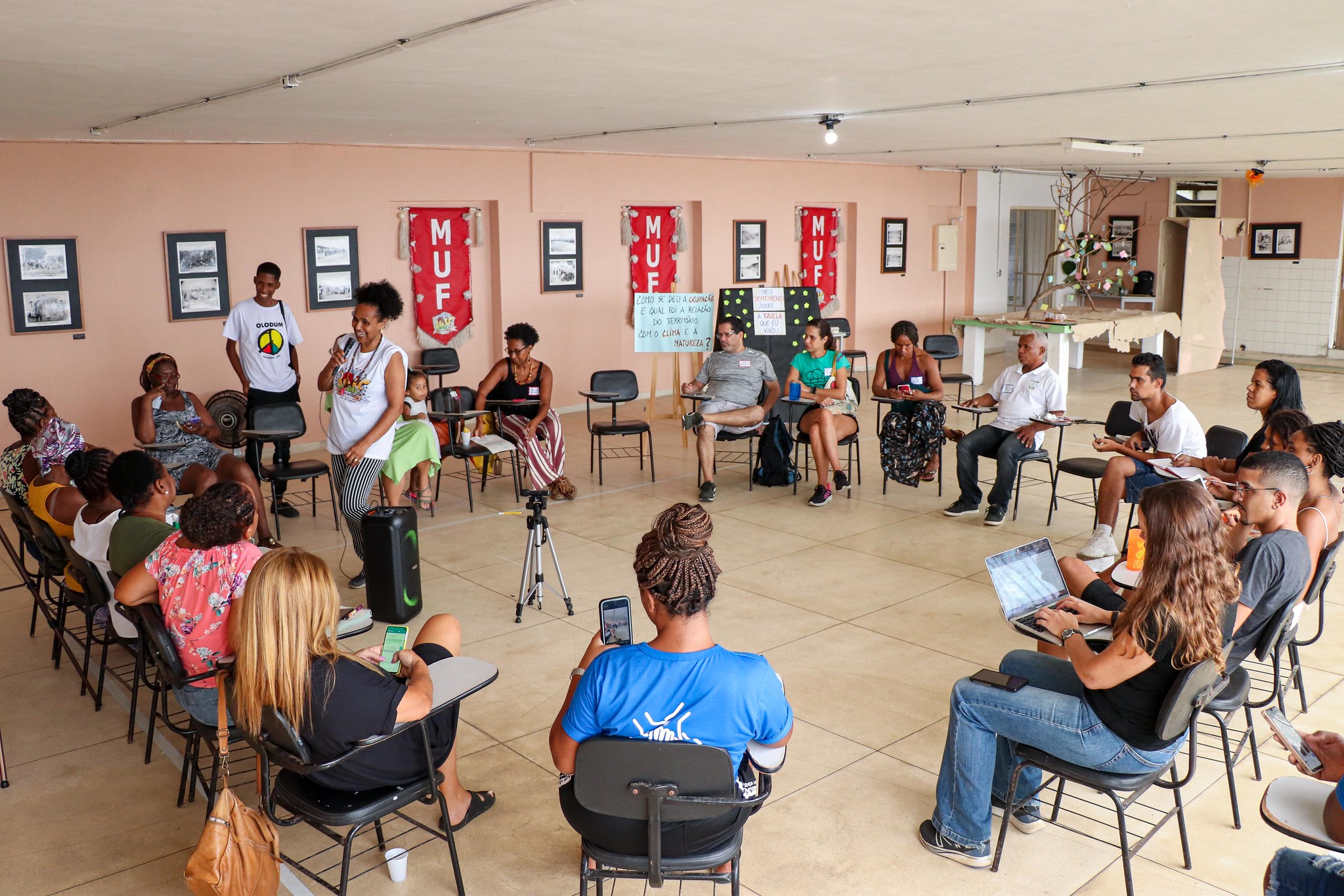
Trash remained a key theme in discussions about how climate events are worse in the favelas—not just because climate change means they are increasingly frequent, but because lack of public investment means there isn’t adequate garbage collection or the environmental education needed for residents to deal with it themselves. Sara Hins, a youth participant of the Youth Pact public project that aims to address this, commented on the situation.
“When there is heavy rain, and because of the lack of waste collection, a lot of water and trash end up in the the streets. Very few people have the awareness and very few do the work [of collection and education]. That’s climate change in the favela.” — Sara Hins
The theme of climate justice was also raised by Gabriela Fleury—a more recent resident of the community and a founder of the Plants on the Streets project.
“One of the biggest problems we see here is trash. And wow, how many problems does this cause us? But we have to see that most of the effects of climate change, these extreme weather events, heavy rain, landslides, health issues, are all much worse in the favelas and urban peripheries. We have to think about that. It’s not a coincidence. How can we improve our areas, for ourselves, and show this to the world?” — Gabriela Fleury

How do Climate and Environmental Issues Dialogue with Housing Rights and Access? What Knowledge Has the Community Already Developed to Respond to the Challenges Posed by Nature and Climate Change?
The conversation circles also explored the relationship between nature, the environment, and housing rights, as well as knowledge the community has developed to respond to environmental challenges.
Some residents felt the favela was more organized in the past and communicated better during an imminent storm so that everyone could help each other.
“When I was little in Pavão, our houses were made of wood… People were more united back then. They had respect for elders too… So a neighbor would shout ‘it’s going to rain, it’s going to rain,’ and would call people over to clear the gutters. And everyone that could would help with the cleaning, because they knew what was coming… Today we live in brick houses, with people building [more] houses, preventing air circulation. We no longer have clean air… we can’t see the sky, feel the breeze… And then, we suffer when the rain comes, because trash comes [with it]. But then, trash on the streets (of the formal city), which is possibly much more than we generate here, their trash they hand over to the poor to deal with. They have housemaids, building caretakers, company workers that deal with the trash, that have to take trash out of the way. Where it ends up, I don’t know, maybe in a landfill somewhere. But our trash, we practically have to eat it. We have to deal with it ourselves.” — Valdete Santos
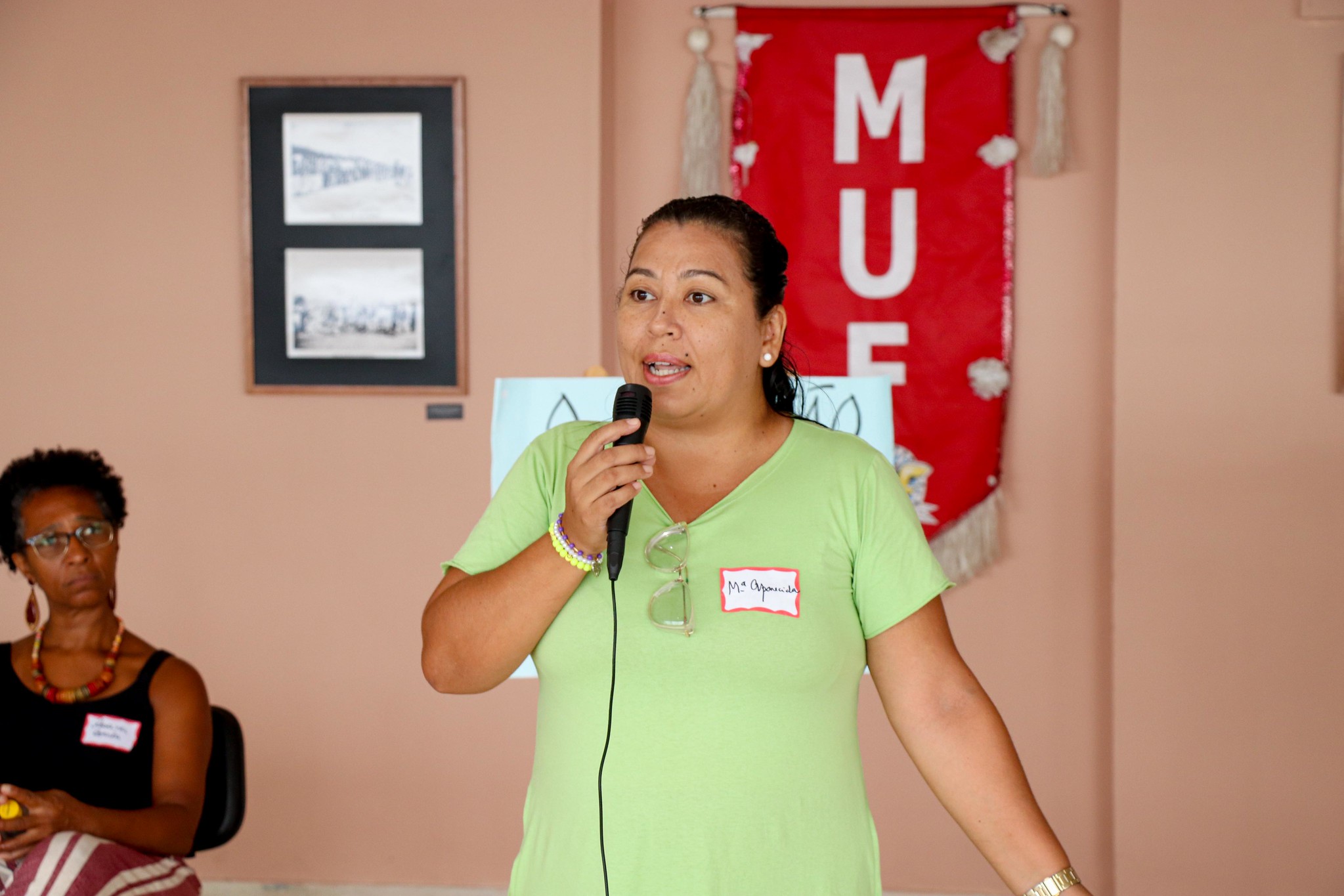
During the circle, resident Maria Aparecida also remembered the old times, telling the story of when her aunt lost the roof of her house during a windstorm.
“In the past, people used to live in big, huge houses. Were they made of wood? Yes. But they were clean and tidy. There were flowers and plants. I was at my aunt’s house by the window when the weather started to turn. I was eight years old, and my uncle said ‘it’s going to rain, close the window!’. The house was made of wood, and above, there were roof tiles. I closed the window. But when I did, what happened? The wind came in, got trapped, and left out the top [pushing the roof tiles up]. And the whole roof flew away.” — Maria Aparecida Pereira
Sônia Modesto reminisced of the time when the first houses were built from natural materials, from the favela’s soil and forest.
“There really was nothing there, it was all forest… The shacks were made of mud that you would throw on the wall and shape by hand.” — Sônia Modesto
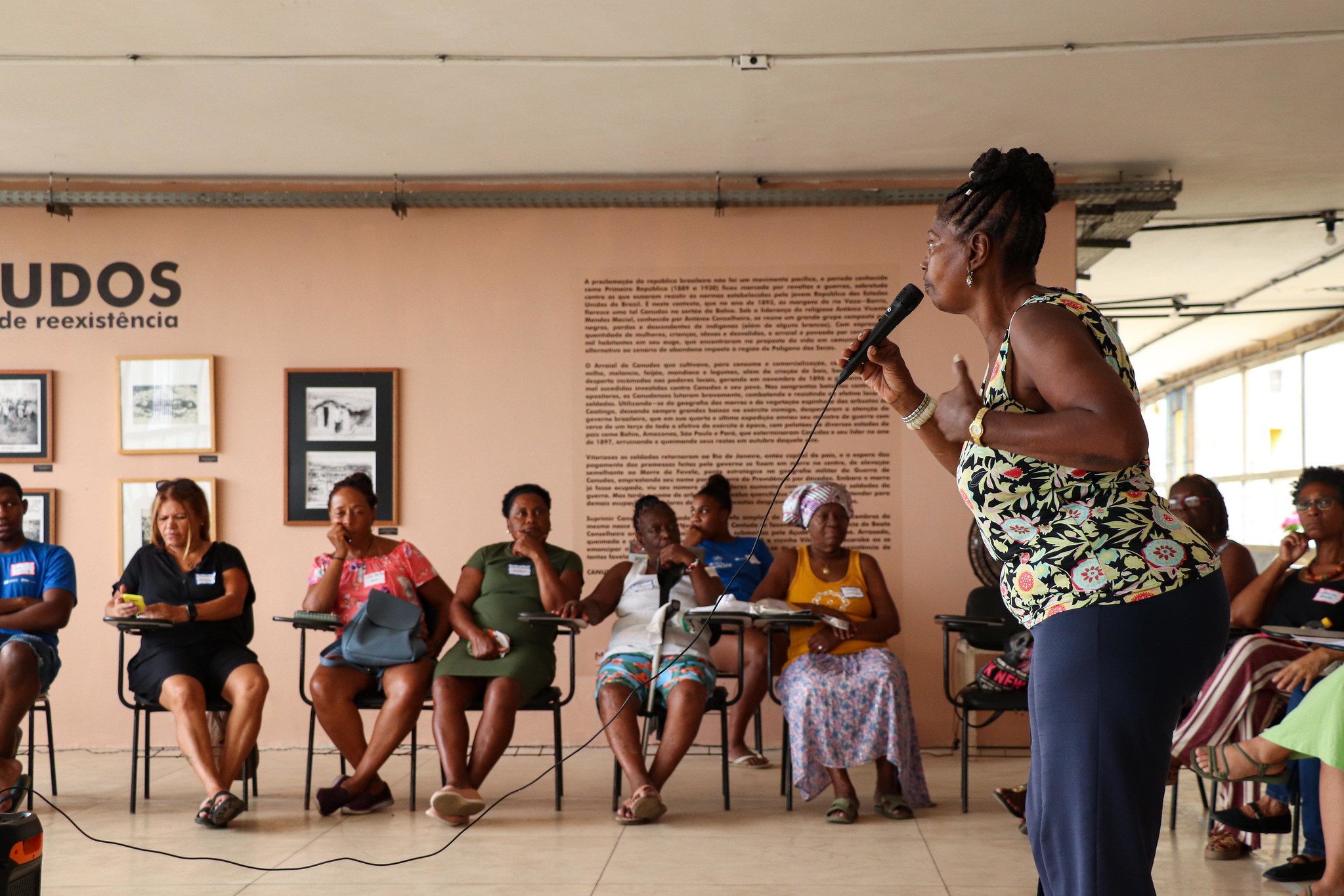
Another issue raised was that of forced evictions as a result of extreme weather events, and how the histories of Rio’s favelas merge and repeat themselves. Valdete Santos talked about how this happened in PPG.
“In 1966, there was what we now call a flood on the asphalt [formal city]. But here in the favela, it was not really a flood, because what happened was a flash flood. A lot of people lost their homes, and with this many people went to City of God. I had an aunt that went there. People went to Paciência [Antares]. [The authorities] took advantage [of the flood] to evict people.” — Valdete Santos
Leonardo Ribeiro, a historian from Antares, echoed Santos’ account, saying that his neighborhood has a direct link with families in many other locations and that these families were often evicted for reasons to do with climate change. According to Ribeiro, eight families were removed after a fire in Pavão in 1966 and went to Antares, Santa Cruz, and neighboring Favela do Aço. Others went to City of God following landslides.
Thinking about solutions created by the community, the issue of trash and socio-environmental education was the most prominent in the discussion. Nivaldo Moura is an environmental organizer and founder of benchmark Cleaner Favela project, which has been running collective actions and cleaning projects for over a decade in PPG. He shared many optimistic and proactive statements.
“I’m not going to dwell on the more degraded parts of PPG. [I] will speak about the beauty I’ve been seeing. Recently… [I] see there is more green, even if people aren’t looking after… the forest. But nature is responding, as it always has. Anyone going through… Saint Roman [street] will see birds that were not there before, there’s a family of little monkeys going around the whole community. This is nature showing its strength, giving a response to humans who destroy, while nature looks after.” — Nivaldo Moura
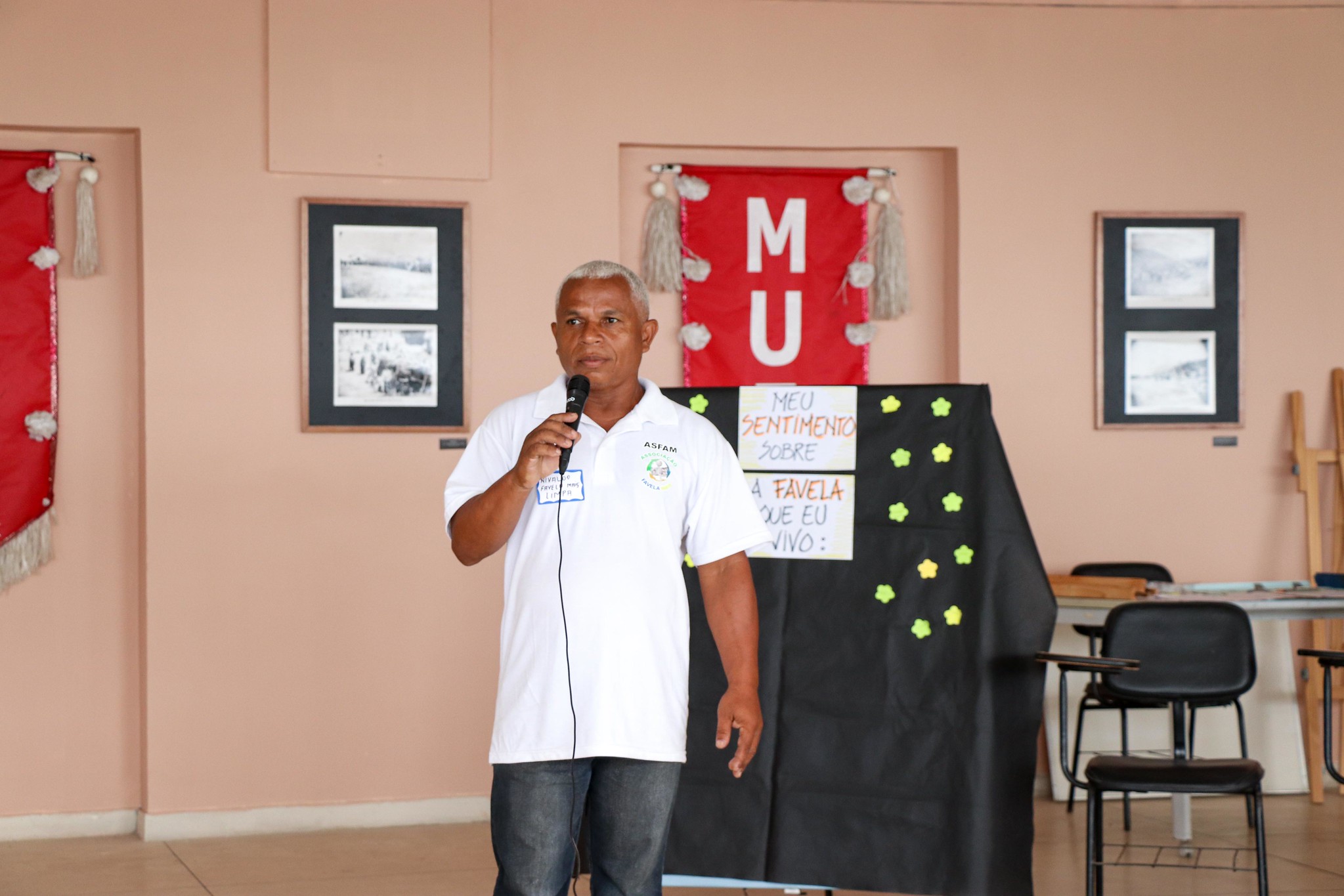
Moura went on to speak about what people are doing to improve the situation, based on his own example. In contrast, the government does nothing.
“Every day I make my reality happen. Saturday, Sunday, and on public holidays. The work is every day. I am embarrassed when I see a tourist here and there’s trash and poop on the floor, open sewerage, leaking sewerage, rats day and night… The government comes up to the favelas in Rio, but why do they not sort this out? We are discussing this theme with people here that are 70, 85 years old. And I don’t know how many years going forward people will be talking about this. And the authorities do nothing.
… The government should be here. We were unassisted by the authorities during Carnival… [Municipal waste utility] Comlurb shined down there [removing all the trash in Ipanema], but up here trash built up, rats everywhere. When I state that the authorities should be at a debate like this to listen, that’s what I mean. I’m telling a story of what I’ve been through, that I tried, but did not succeed by myself… When there is an event like this one, people name me, they call on me, because it is serious work… [But] what are we doing as a community to prevent a new tragedy?” — Nivaldo Moura
Focusing on the importance of residents’ individual responsibility, Valdete Santos added:
“Residents are embarrassed to go down [the hill] carrying trash. Me, I’m proud of it. I don’t care if I’m well dressed. It makes me proud. We see whole families go down the hill without taking anything. Where is all the trash? Or do they elect one person in the household to go down the hill with a garbage bag no one can manage? Is it too much to ask that people take their own household trash down? Every family produces trash every day, so why can’t they bother to take it down the hill?” — Valdete Santos
Rafaela Machado, a youth communicator from PPG Informative, raised this responsibility for herself, remembering that she made mistakes as a child.
“We need to change our relationship with trash. This is an issue in all favelas. Where I lived in Pavão, near where the rock fell, there really was a mountain of trash. I also made the mistake, as a child, of throwing trash there out of laziness. But I was called out for it. It is not just [the responsibility] of the government, but it also has to do with our education.” — Rafaela Machado
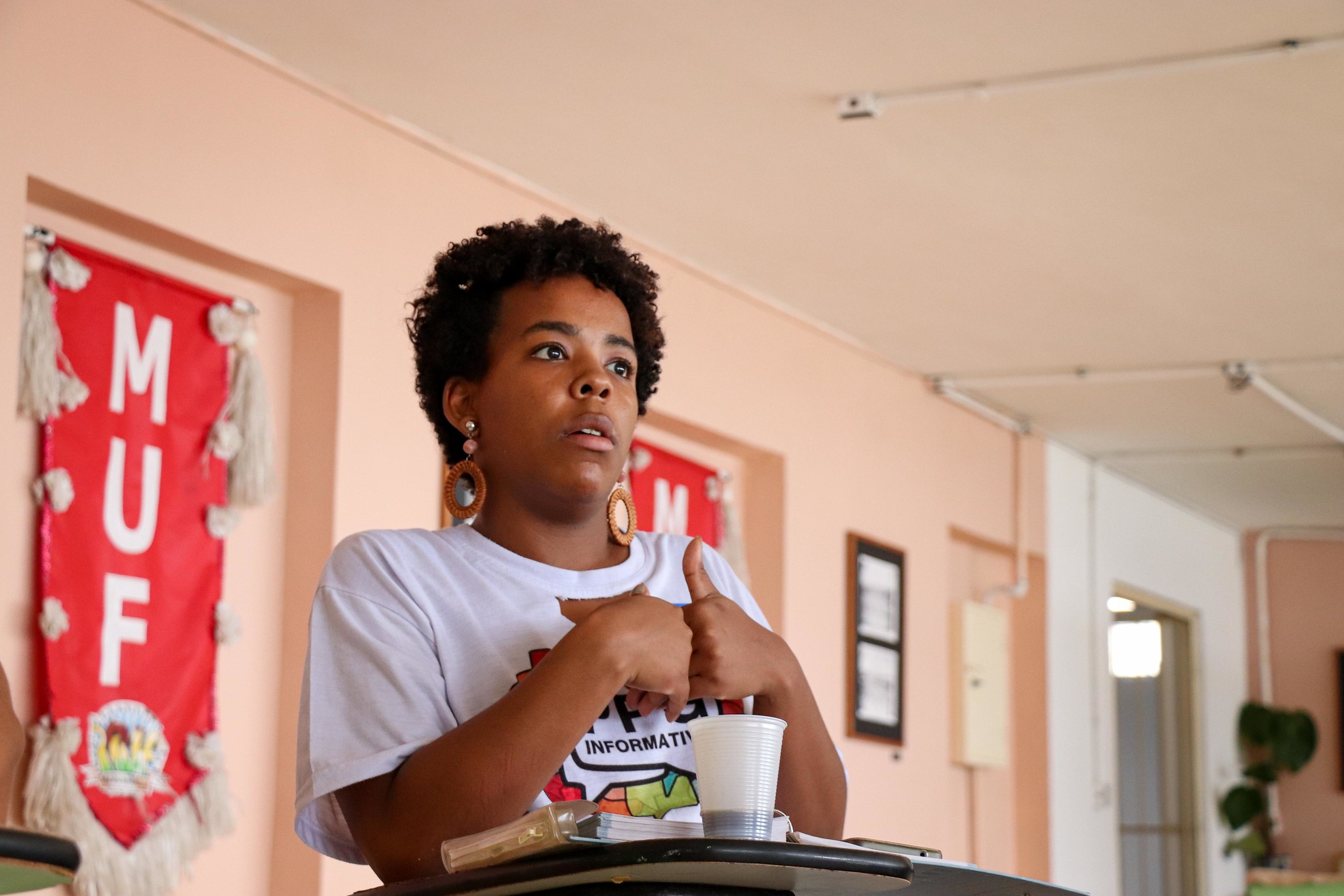
Thinking about preventing future landslides from a different perspective, Gabriela Fleury highlighted another aspect that should be part of the solution: tree planting and maintenance.
“If you kill the tree, the roots die too. And roots help prevent landslides.” — Gabriela Fleury
Isabella Rego, whose family founded Solar Meninos de Luz, an all-day school that promotes integral education, put forward another proposal, raising the issue of electricity—a global warming villain.
“Here we are exposed to the sun, so the community could research further the possibility of obtaining funds to generate solar power for houses, because this would help reduce costs that can create problems for the community’s security and issues with loss of power, and it would be more visually appealing to have fewer exposed wires. The Solar already has a small section of solar panels that help a lot with energy costs.” — Isabella Rego
The discussion circle ended with a profound reflection from host Márcia Souza on strengthening engagement and unity.
“This is a huge internal challenge of ours. This is what I think, as someone who was born here, whose mom was born here, [as someone that had] the opportunity to leave and come back… I left the country, and now I say ‘My place is here.’ I chose to be here because I wanted to. The work I do today, the ups and downs of an innovative museum with a team of women; we don’t have men in our team. Women that have been excelling. The most important thing is to… unite. To do away with this notion that we don’t listen to each other.
I see people here today that came because I went and invited them, one by one. I feel like crying every time I see so many people like this. This is a sign of victory, because we reach [the objective] when we make the first step. The authorities, OK. But we’re the ones who put them there. What we can do is unite, talk about this all the time. And gather opinions. Let’s sew, let’s sew a quilt.
So my proposal is this. Create, based on young people, on seniors. We have to make the most of this opportunity to listen to each other, to come together. We have lots of results already. So this is it really. Not everyone has the same way of being and thinking. Isabella has one, just like Aunt Sônia, Aunt Zilda, Rafaela… Because each one is a different person. This is what makes us stronger. And begin this journey of transformation. It is our favela, PPG, that we have to focus on now. And maybe then who knows, we can expand. Imagine, just like Marielle. Fruits of what she created. Black women from favelas now see themselves in Marielle. This is it. I know many Black girls that are there following the path she paved. A woman from a favela, she worked hard, graduated, and fulfilled her role.” — Márcia Souza
Read the entire series of reports on the Favela Climate Memory project.
Don’t miss the album below (or click here to view on Flickr):
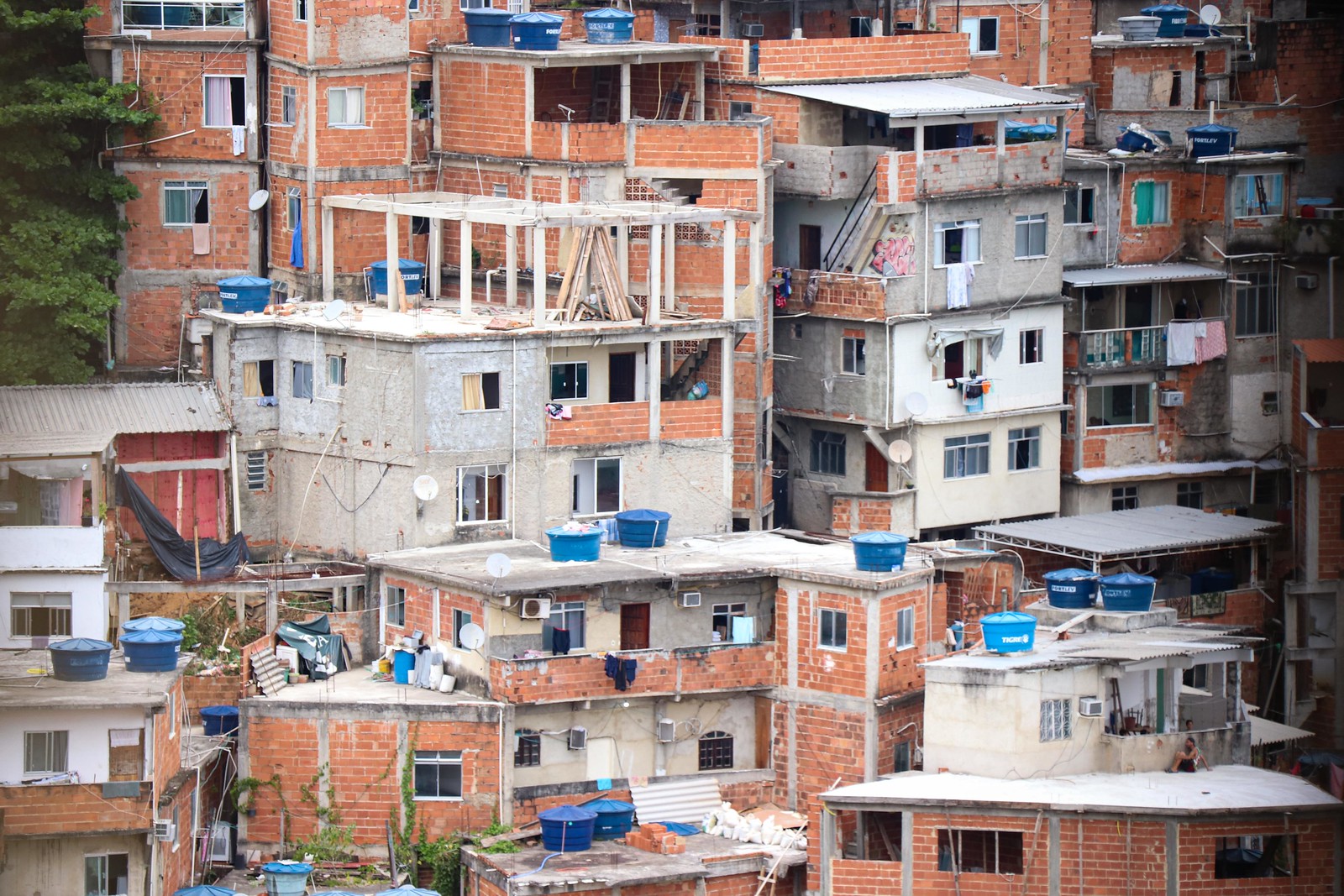 *The Sustainable Favela Network (SFN) and RioOnWatch are projects of Catalytic Communities (CatComm).
*The Sustainable Favela Network (SFN) and RioOnWatch are projects of Catalytic Communities (CatComm).
